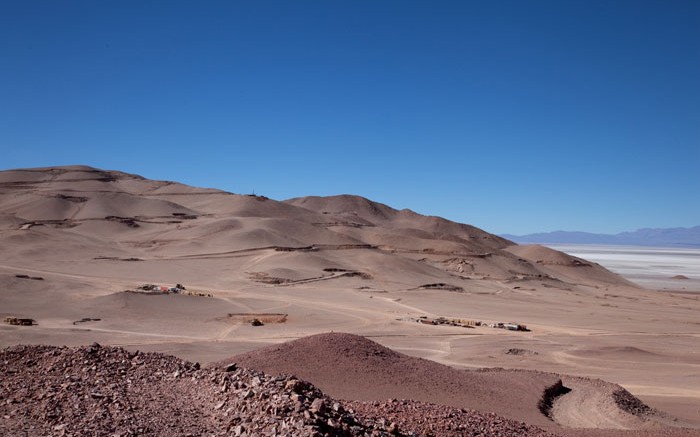The worst of the current downturn may be over, PwC argues in its eighth annual Junior Mine Report in late October. Looking at the top-100 TSX Venture-listed juniors by market capitalization, PwC has found that while the junior sector is still in survival mode, there are signs of recovery.
“The picture is brightening, somewhat: The market capitalization of the top 100 has increased by 20% for the 12 months ended June 30, 2014, compared to a year earlier,” PwC global mining leader John Gravelle writes. The firms have a combined $7.9-billion market capitalization, up from $6.6 billion a year ago.
The analysis shows that since 2007, the top 100 accounted for more than half of the market capitalization for total mining companies, with the exception of 2008, when it tumbled to 29%. From 2007 to 2012, mining firms made up 57% of TSXV’s total market capitalization. Last year, this percentage fell to 35%, but improved to 37% in 2014.
The average market capitalization among the top 100 is $79 million, up from $65 million in 2013. While noteworthy, it is still below the averages seen in 2011 and 2012.
Of the top-100 companies, 56 are in the exploration phase, 23 in development and 21 in production, largely in line with previous years, with a slight increase in producers and a drop in developers this year.
Similar to prior years, most of these entities have their head office in B.C., followed by Ontario. They prefer to work in Canada and the Americas, with gold remaining the target commodity of choice.
Looking at the financials for the top 100, PwC highlights that these companies spent less on their operations in 2014 than in 2013, but also raised less money for the year ended June. Equity financings totalled $685 million, down from $795 million in 2013. Both years were below the $1.6 billion raised in 2012.
Total cash position fell 20% year-over-year to $968 million on the back of fewer equity financings, with producers seeing the biggest decline in their treasury. Debt financing grew by $90 million this year to $379 million, adding stress on the sector with interest costs and covenants.
Total revenue dropped 21% to $690 million from $872 million in 2013, which already saw a 25% decline from the $1.2 billion generated in 2012.
“Volatile commodity prices are to blame for a drop in production and revenues, which also led to an increase in writedowns across the sector,” PwC says.
Writedowns jumped 167% to $233 million, up from $87 million in 2013. But two-thirds of the total writedowns this year came from two companies, while half of the firms had no writedowns, and a quarter of them had writedowns of less than $1 million.
Of note, operating costs fell 26% due to lower production costs and general and administrative (G&A) costs. Miners spent less on G&A, except for those in the exploration phase, which saw flat year-over-year expenses.
Overall, the net loss for 2014 grew 19% to $652 million.
“While the industry is still in doldrums, we are also confident that the market will soon turn. Long-term demand for metals and minerals will continue as the world’s population grows,” Gravelle writes.
Keeping with the optimism, TSX Venture Exchange president John McCoach points out that mining financing for the first eight months of 2014 has actually increased over the same period last year.
McCoach says the exchange is doing its part to help junior miners during these turbulent times. For instance, it has introduced prospectus exemptions that allow firms to tap into their shareholder pool to raise funds.
Gravelle concurs. “It is good to see that [the regulators] are taking positive steps to reduce the costs of being a public company,” he told The Northern Miner in an interview.
Listings and delistings
Gravelle says he was surprised that the number of delistings for the year ended in June was less than predicted.
“We have been through three pretty tough years, and there were a lot of predictions going on two years ago and certainly some last year that we may lose 25% of the mining companies on the TSXV, and surprisingly the number of delistings was only 49 in total.
“So there were very few delistings compared to the overall number, and the percentage is low. That was both surprising and inspiring that companies were able to switch gears, and do what they had to do to stay afloat.”
Of the 49 delisted firms, 28 were involved in a merger or amalgamation, 20 requested to delist and one failed to pay its listing fee. PwC expects the same number of delistings in 2015.
The number of initial public offerings in the junior mining space fell to two, down from 24 in the earlier year. Graduations to the TSX slipped to six, compared to seven. In 2012, 27 miners upgraded to the TSX.
Top five
The top-five firms by market cap for the year ended June 30, 2014, were Lumina Copper, which First Quantum Minerals (TSX: FM; US-OTC: FQVLF) acquired in August, Fission Uranium (TSX: FCU; US-OTC: FCUUF), Bear Creek Mining (TSXV: BCM; US-OTC: BCEKF), Gold Reserve (TSX: GRZ; US-OTC: GDRZF) and Reservoir Minerals (TSXV: RMC; US-OTC: RVRLF).
Since 2009, the top five have accounted for 23% of the market capitalization of the top-100 mining firms. This year, they made up 21%, up 3% from last year.


Be the first to comment on "Better days await the junior sector, PwC reports"